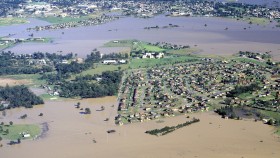ANU welcomes end to Renewable Energy Target deadlock
The ANU Climate Change and Energy Change Institutes have welcomed the end of the deadlock over the Renewable Energy Target (RET), but have concerns about some of the amendments.
Director of the ANU Energy Change Institute, Professor Ken Baldwin, said “Whilst the reduction in the 2020 Renewable Energy Target from 41,000 GWh to 33,000 GWh will slow decarbonisation of Australia’s electricity sector, we are pleased the deadlock is over and that some certainty can now be given back to industry.”
Professor Baldwin stated that “the electricity industry needs certainty to invest in long-term (multi-decade) generating capacity, but the RET is only in force until 2020 (just 4 years and 7 months away). Although the major Parties have agreed to get rid of the intermediate biennial reviews which would have thrown certainty out the window, Labour have promised to increase the target after the next election, whilst the Coalition government’s future plans are uncertain.
“However, while the current agreement will fast track the backlog of wind projects already stalled by the RET uncertainty, it may squeeze out large-scale solar investment which, under the original 41,000 GWh target, would have become more competitive towards 2020” Professor Baldwin said. “This is disappointing as the introduction of utility-scale solar and wind via the RET has been projected to help keep electricity prices down through competition with incumbent fossil fuel generation.”
Professor Janette Lindesay, Deputy Director of the ANU Climate Change Institute, said “The 33,000 GWh RET is demonstrably achievable using renewable technologies such as wind, solar and hydro and this agreement reduces uncertainty for the sector.”
“However, we are concerned about the suggestion to include the burning of native forest timber waste. First, the decay process itself takes many decades and retains some of the carbon in the soil, whereas burning the waste timber releases it immediately into the atmosphere. Second, there is an additional and ongoing carbon footprint from the collection, transport and further processing of the waste timber before burning. Third, the worst case scenario is that burning timber waste facilitates logging trees that would otherwise have locked up carbon naturally or in timber products.“
“With the current RET deadlock over, our next priority is Australia’s emissions reduction trajectory post 2020. If we are to ensure that Australia meets its international commitments to limit global warming below dangerous levels, then we need to provide the electricity sector with the certainty needed to make this happen,” Professor Lindesay said.










